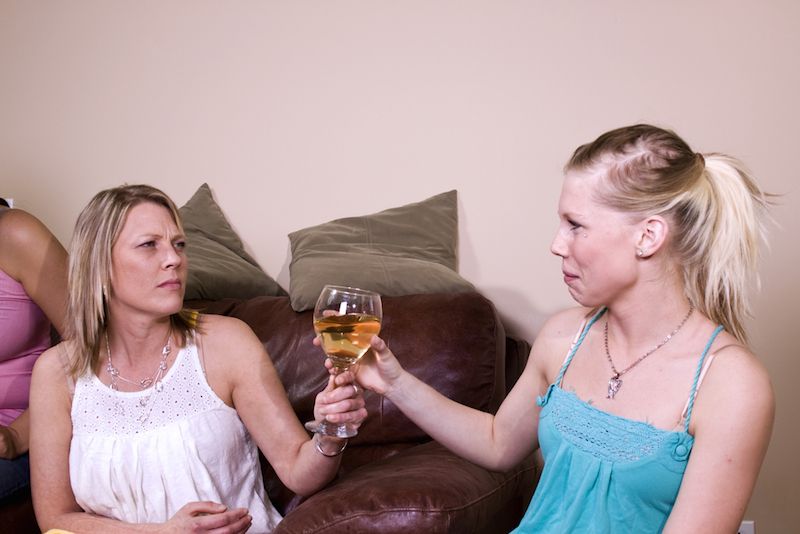Letting Kids Taste Alcohol May Promote Early Drinking

Children who try a sip of alcohol before sixth grade may be more likely to start drinking by the time they enter high school, a new study suggests.
Researchers found that kids who had tastes of an alcoholic beverage before they started middle school were five times more likely to have a full drink by ninth grade, compared with their classmates who had not tasted alcohol.
These "early sippers" were also four times more likely to get drunk or binge drink by their first semester of high school compared with their peers who abstained, the study showed.
Although there is a widespread belief that sipping alcohol at a young age may be a protection against later heavy drinking, the study shows that such sipping is actually associated with an increased risk of drinking, as well as using other substances, by the time kids enter high school, said Kristina Jackson, a co-author of the study and a researcher at the Center for Alcohol and Addiction Studies at Brown University in Providence, Rhode Island. [7 Ways Alcohol Affects Your Health]
Many of the kids in our study reported that parents — either knowingly or not — are a source of alcohol, Jackson said.
Young sippers
The study looked at data collected from 561 middle-school students in Rhode Island, who were followed over a three-year period, from the time they started sixth grade until they began ninth grade. The kids were surveyed several times a year about their use of alcohol, tobacco, marijuana and other drugs, according to the study, which was published online today (March 31) in the Journal of Studies on Alcohol and Drugs.
Sign up for the Live Science daily newsletter now
Get the world’s most fascinating discoveries delivered straight to your inbox.
The results showed that by sixth grade nearly 30 percent of kids had tasted alcohol that was not part of a religious celebration, and they typically had this first sip by age 7. Most of these first sips were of wine or beer, and came from parents offering their kids a taste of their drink at home.
By the time they got to ninth grade, about 26 percent of the early sippers had consumed a full drink, and about 9 percent had gotten drunk. In comparison, among their nonsipping peers, 6 percent had consumed a full drink and 2 percent had gotten drunk, according to the study.
These findings dispute what some have dubbed the "European approach," of exposing children to alcohol at a young age in hopes that this will protect kids against subsequent drinking because it makes drinking seem less taboo.
"We need to be very careful not to assume that early alcohol consumption will somehow protect children or teach them how to drink safely," Jackson told Live Science.
The study shows that early sipping is not necessarily harmless, she told Live Science, noting that although alcohol problems among teens may be lower in some Southern European countries, that's not the case in Britain, Ireland or Northern European countries.
Some weaknesses of this study are that it only included kids in one state and may not reflect alcohol patterns in the rest of the U.S., and it's also not known whether similar results might be seen in children whose first sips of alcohol occur at an older age than the kids in the study.
"Our findings underscore the importance of advising parents to provide clear, consistent messages about the unacceptability of alcohol consumption for youth," Jackson said.
She said offering your child a sip of your drink is not advisable, as it may send the wrong message. It may suggest to young people that drinking is okay, especially when alcohol is offered by a parent.
"Younger teens and tweens may be unable to understand the difference between drinking a sip of alcohol and drinking one or more drinks," Jackson said.
Follow Live Science @livescience, Facebook & Google+. Original article on Live Science.
Cari Nierenberg has been writing about health and wellness topics for online news outlets and print publications for more than two decades. Her work has been published by Live Science, The Washington Post, WebMD, Scientific American, among others. She has a Bachelor of Science degree in nutrition from Cornell University and a Master of Science degree in Nutrition and Communication from Boston University.









